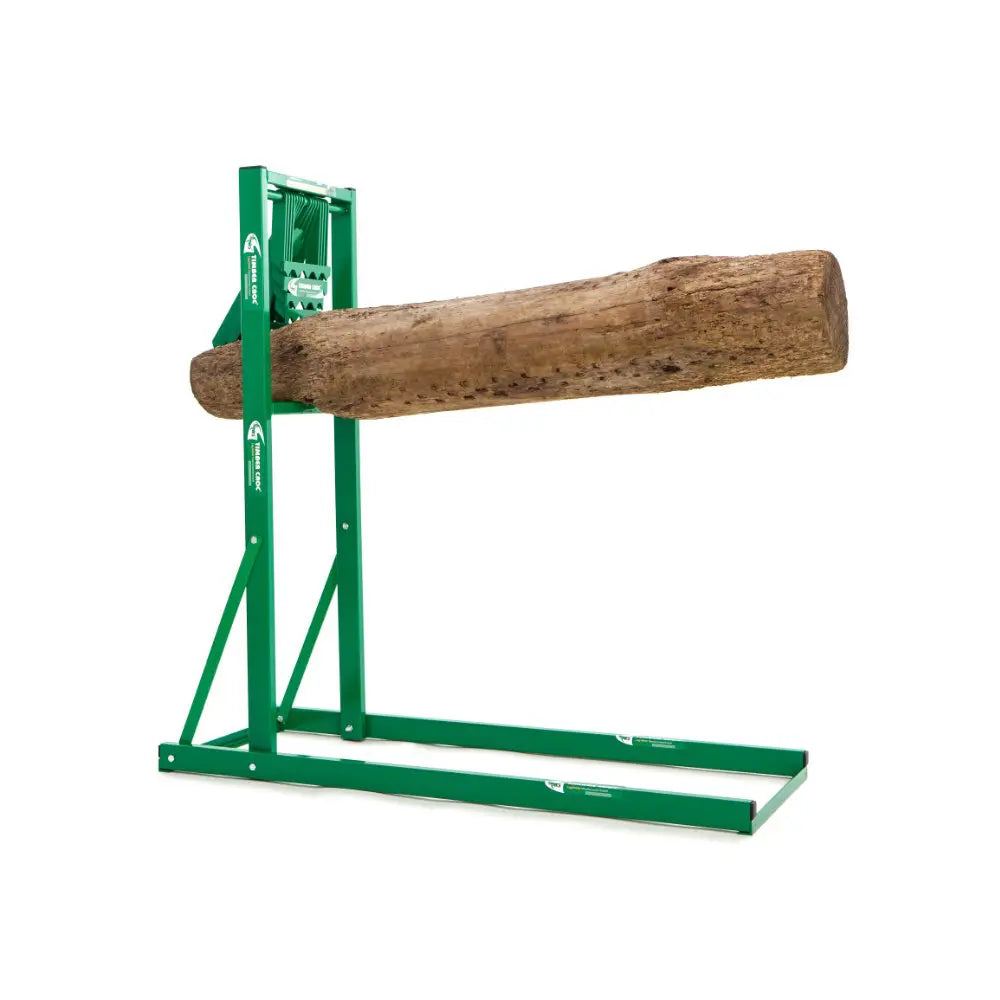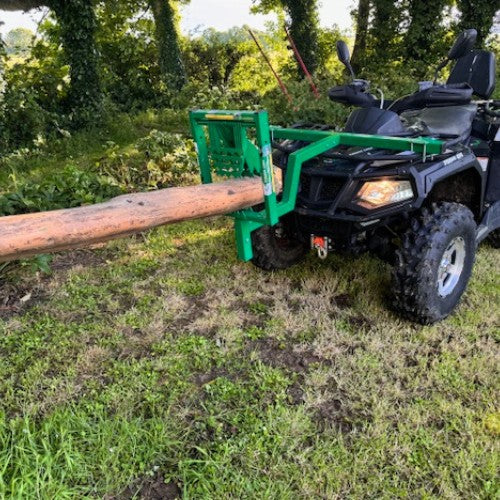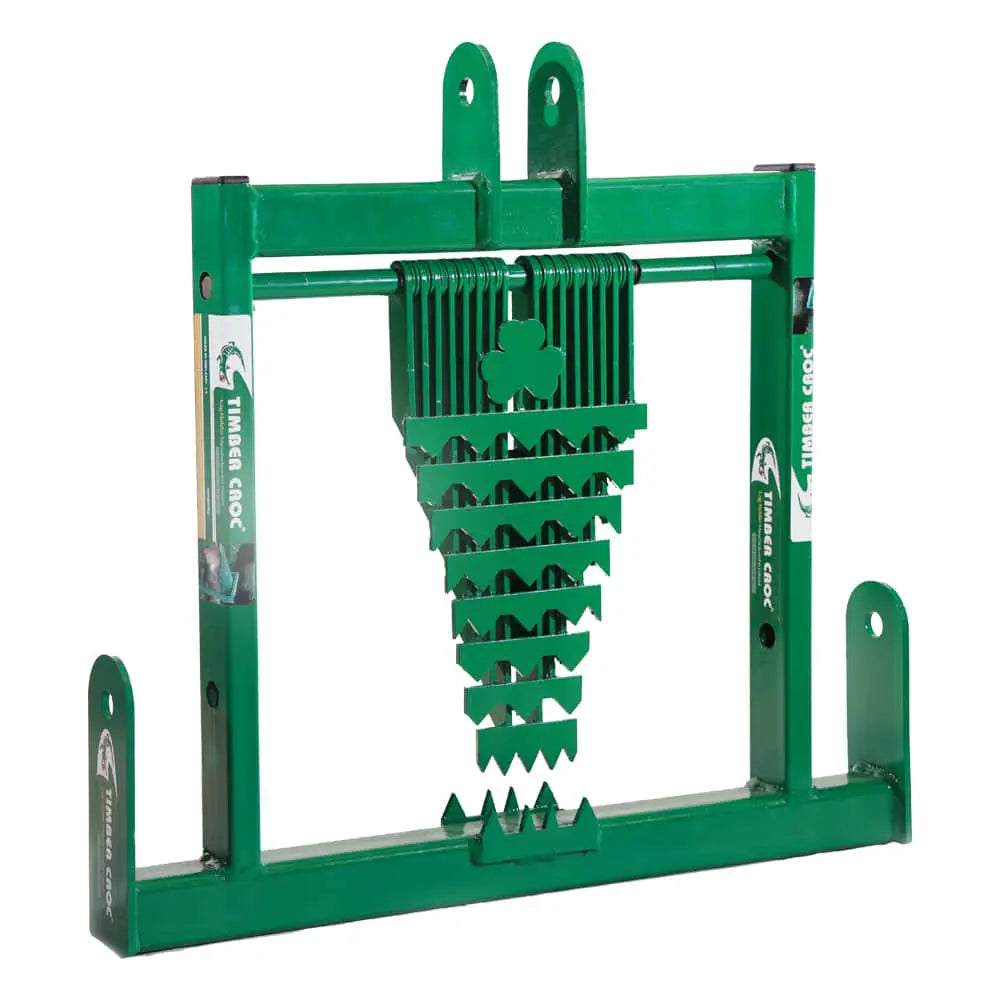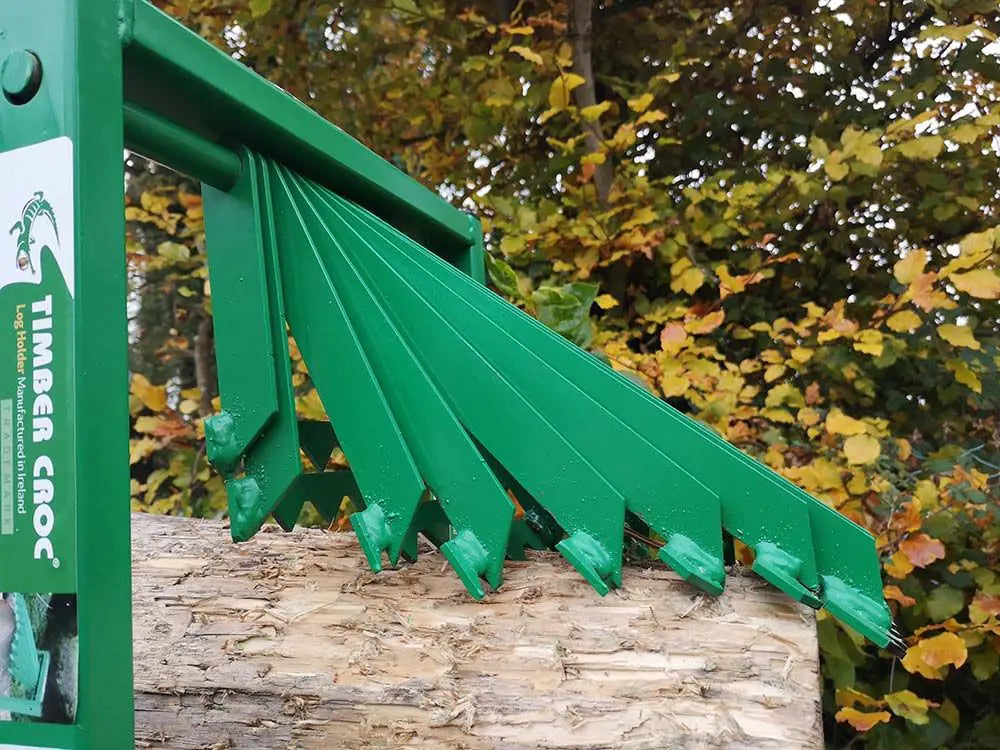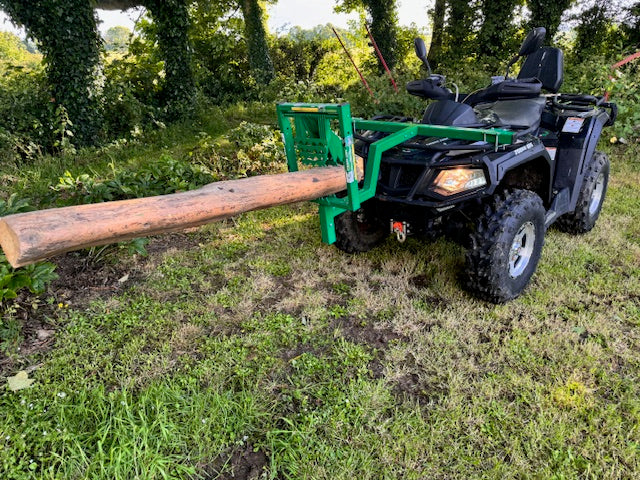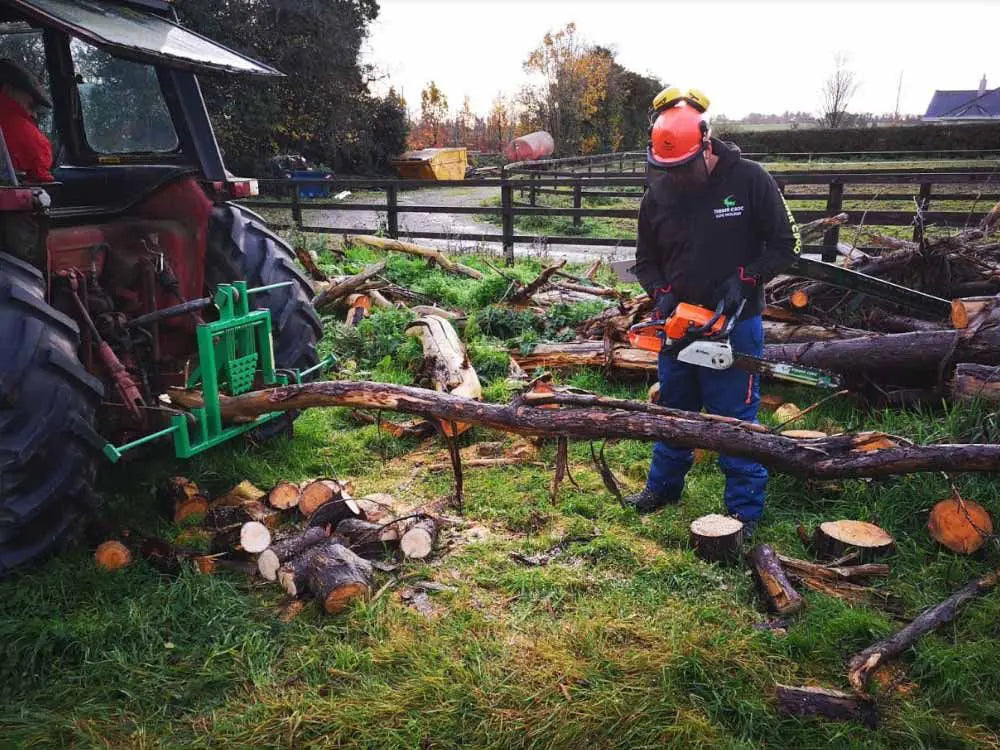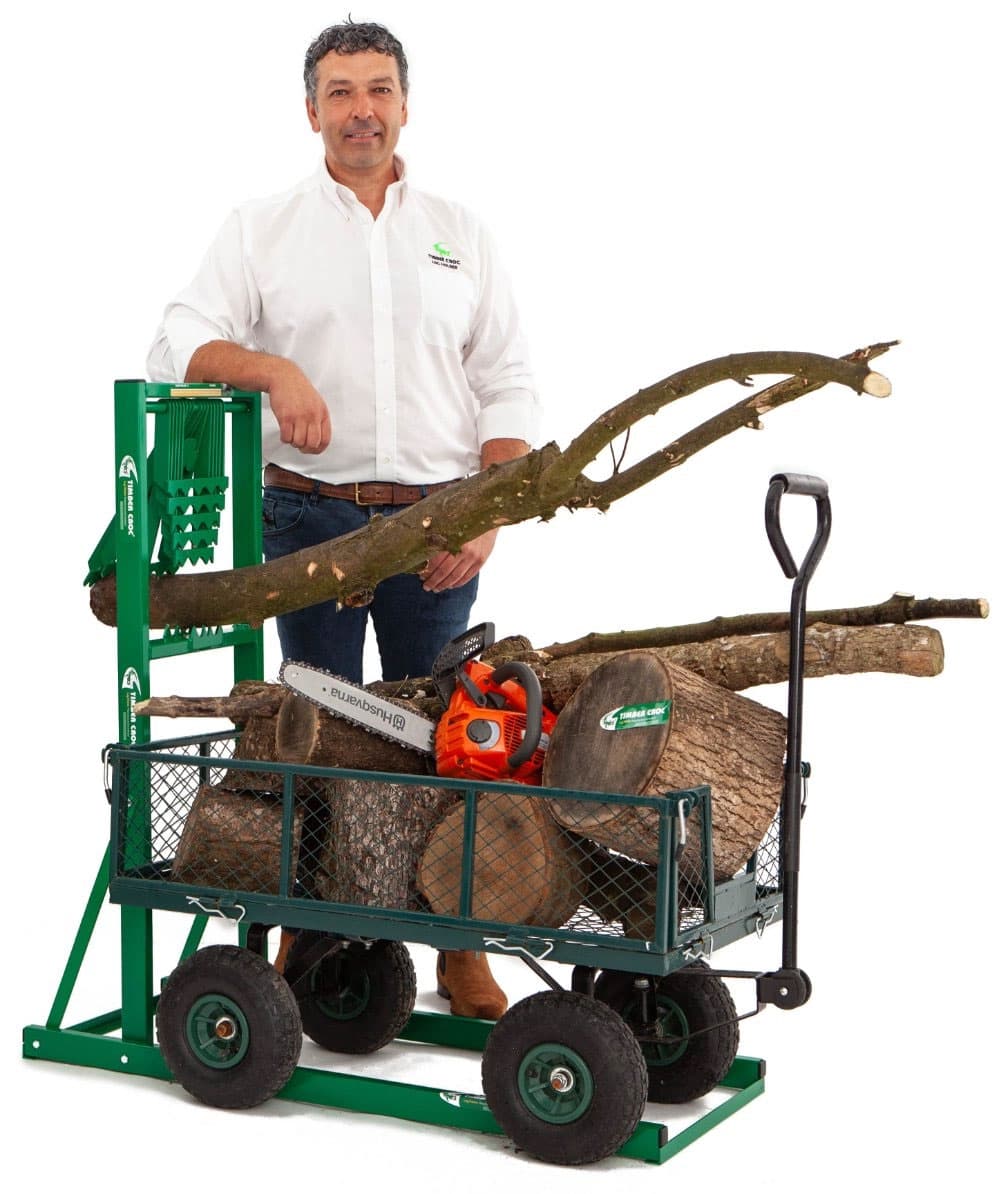Menu
How To Use A Chainsaw Safely
Chainsaw accidents range from minor inconveniences to fatal mishaps. It’s easy
to look at a chainsaw and imagine the type of damage it can do. Even a small slip-up can turn serious if you don’t know how to do the job safely.
Keep reading to learn how to protect yourself from a chainsaw accident.
1. Wear Protective Gear
Before you start using the chainsaw, always arm yourself with the right protective gear. Wear this gear even for a small job. You never know when the chainsaw could kickback or some other accident could happen.
Buy high-quality protective equipment that’s comfortable and will last a long time. Although nothing will completely protect you, the right gear makes injuries less common and less serious.
Don’t forget that the noise of the chainsaw can damage your hearing, too. Make noise-cancelling earmuffs a part of your protective gear.
To keep yourself physically safe, start by putting on safety glasses and a helmet to protect your eyes, face, and head, as well as your earmuffs. Next, add a pair of chainsaw gloves. These aren’t just any gloves: they have a pad to protect the back of your left hand.
Next, add leg protection to keep this vulnerable area safe from the blades, as well as chainsaw trousers. This and the rest of your clothes should fit snugly, so it won’t get caught on the chainsaw blades and pull you into harm’s way. Look for snag-resistant items.
Your boots should have plenty of traction, as well as steel toes. With all of this equipment, you’re much less likely to get seriously injured. However, you’ll still need to use your chainsaw with safety in mind.
2. Bring a First-Aid Kit
The right gear will make injuries less likely, but it won’t make them impossible. Make sure you have a first-aid kit that has everything you’ll need if you do get hurt.
This kit should have equipment for dressing large wounds, as well as caring for smaller mishaps. Make sure to check your kit regularly and restock things as needed.
3. Get Familiar With Your Chainsaw
Get to know the tool you’re working with before you start tackling a project.
Begin by getting a feel for the controls. Find out where they are before you start the chainsaw. Prepare to turn off the chainsaw quickly off needed.
When you work with a new chainsaw, you’ll start by adding the gas and oil. Then before starting it, move away from the place you filled it, and make sure you’re not close to anything that could catch on fire.
Start your chainsaw while it’s on the ground, with your right foot in the loop of the back handle and your left hand gripping the front handle. Stiffen up your left arm to keep the chainsaw firmly in place as you start it.
Once it’s running, work with the throttle a bit to see how it changes the feel of your chainsaw. Make sure to have the right stance before you start cutting. Keep your feet below your shoulders, and stand in a stable, comfortable position.
Keep the saw to your side, rather than directly in front of you. Be prepared to feel both pushing and pulling forces as you cut.
It’s also a good idea to test the controls before you start. Make sure everything works, and that if there’s an emergency you’re ready to turn off your chainsaw immediately.
4. Maintain Your Chainsaw
Proper maintenance can help prevent lots of accidents.
Some of the most important parts of basic chainsaw maintenance include sharpening the blade, cleaning the air filter, and tuning the engine. Many preventable accidents happen because of poor maintenance. So make sure you get your chainsaw serviced regularly.
5. Know What You Should Not Do with a Chainsaw
If you’re physically or mentally tired, you should simply avoid using a chainsaw altogether. Maybe you can accomplish a safer task at those times, or have someone else do the chainsaw work instead. When you’re tired, you don’t have the fast response times that can help keep you from getting injured. Using a chainsaw takes a lot of focus, plus a lot of physical effort. Make sure you’re up to the task before you get started.
It is also best to cut below your shoulder height. This is because it keeps the chainsaw away from your face, should something happen and it should fall. Cutting below your shoulders also protects you from falling wood.
Another important thing to avoid is walking around while the chainsaw chain is spinning. It is fine to have the motor running while you walk, but do not press the throttle unless you are preparing for a cut.
6. Understand the Chainsaw Kickback Zone
Kickbacks are one of the most common causes of chainsaw injuries.
In a kickback, the saw flies up at you, sometimes seemingly out of nowhere. It can cause serious damage when it hits your face or another body part, and you won’t have time to avoid it. However, you can avoid kickbacks most of the time by using the right techniques.
Here is a great video that explains what is the Chainsaw kickback:
How do you stop a chainsaw kickback?
To avoid the kickback zone, always cut with either the bottom or the top of the saw, never the end of it. Most of the time, you’ll cut with the bottom of the saw, moving downward as you make the cut.
Sometimes, you might need to cut upward with the top of the blade. Although you’ll feel a push of the saw in your direction, this method is also safe as long as you’re properly braced.
However, the tip of the saw, especially the upper part of the tip, is the kickback zone which you should always avoid. Although your saw should have a chain brake that will halt the chain during a kickback, kickbacks can still hurt you, so take care to avoid them.
You should also apply full throttle before cutting into the wood.
How dangerous is using a chainsaw?
Every year, chainsaw accidents put tens of thousands of people in the hospital. However, you can make sure this doesn’t happen to you by learning basic chainsaw safety.
Luckily, chainsaw safety makes using these tools on the job safer and easier for anyone.
Shop Timber Croc Log Holders
Work smarter, not harder.
- Choosing a selection results in a full page refresh.


